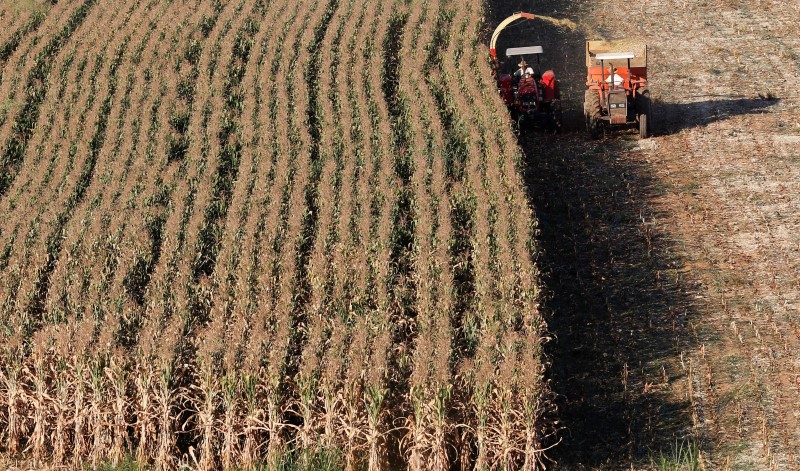Investing.com - U.S. corn futures fell for the second consecutive session on Tuesday, after a report from the U.S. Department of Agriculture showed rapid planting progress in the U.S. Midwest last week.
On the Chicago Mercantile Exchange, US corn for May delivery hit a session low of $3.7413 a bushel, the weakest level since April 16, before trading at $3.7440 during U.S. morning hours, down 2.83 cents, or 0.75%. A day earlier, corn futures lost 1.6 cents, or 0.46%, to settle at $3.7800.
The U.S. Department of Agriculture said Monday that approximately 9% of the corn crop was planted as of April 19, up from just 2% in the preceding week.
Nearly 6% of the crop was planted during the same week a year earlier, while the five-year average for this time of year is 13%.
Meanwhile, US wheat for May delivery slipped 3.98 cents, or 0.8%, to trade at $4.9463 a bushel. On Monday, wheat gained 4.2 cents, or 0.86%, to close at $4.9860.
The USDA said that the U.S. winter wheat crop was rated 42% good to excellent as of last week, unchanged from a week earlier. Approximately 34% of the crop was in good to excellent condition in the same week a year earlier.
The agency also said that 36% of the spring wheat crop was planted as of last week, up from 17% in the preceding week. Only 9% of the crop was planted in the same week a year earlier, while the five-year average for this time of year is 19%.
Elsewhere on the Chicago Board of Trade, US soybeans for May delivery inched down 4.0 cents, or 0.41%, to trade at $9.7300 a bushel.
The May soybean contract hit $9.8100 on Monday, the most since April 7, before ending at $9.7740, after China's central bank cut banks' reserve requirement ratios in an effort to spur economic activity. The Asian nation is the world’s largest soybean consumer.
Gains were limited amid optimism over the outlook for supplies in South America. Brazil and Argentina are major soybean exporters and compete with the U.S. for business on the global market.
Large South American crop prospects could weigh on demand for U.S. supplies.
Corn is the biggest U.S. crop, followed by soybeans, government figures show. Wheat was fourth, behind hay.
